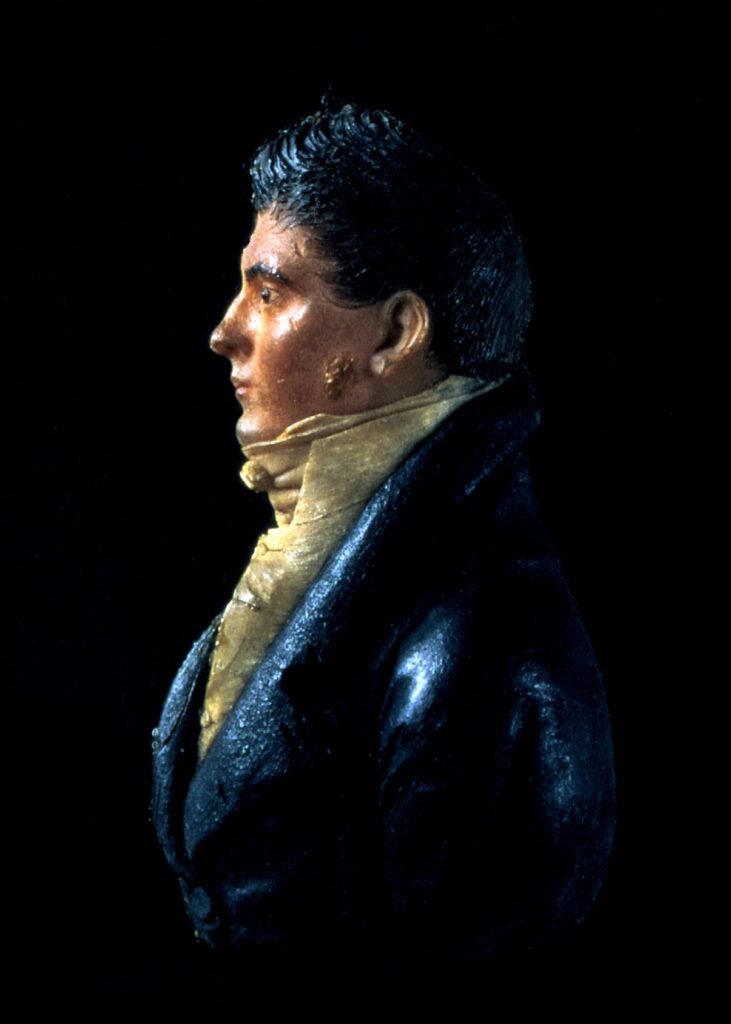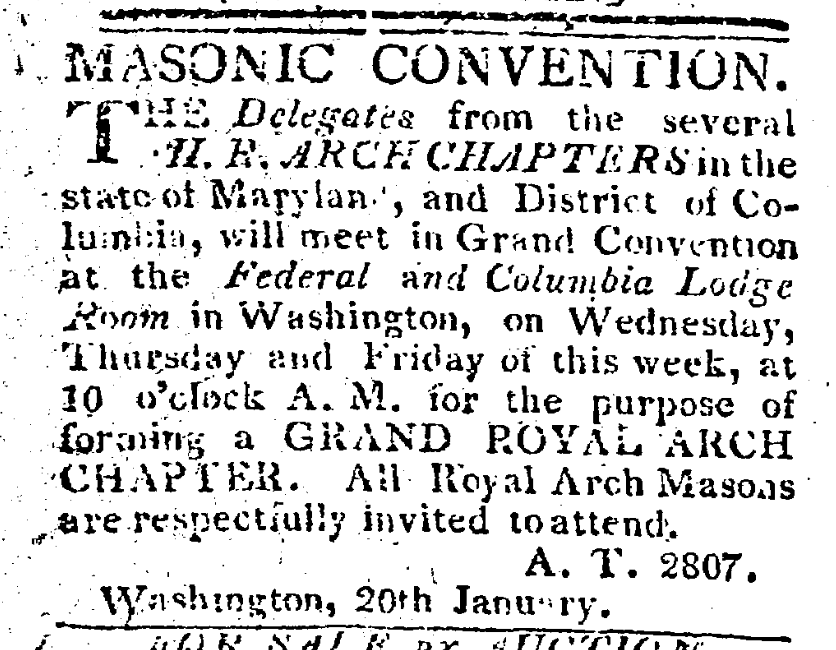History of the Grand Chapter
While the Grand Chapter is the oldest Masonic appendant body in Washington, Royal Arch Masonry began in the city much earlier, over seventy years earlier in fact, around 1795. The scraps of information we know about these early Royal Arch activities provide us with great insight into the history of Capitular Freemasonry and help us better understand the fraternity’s impact in Washington.
Origins

In September 1793, James Hoban and his Masonic colleagues working to build the White House and Capitol petitioned the Grand Lodge of Maryland for a charter to establish a new craft lodge in Washington. The Grand Lodge of Maryland maintained jurisdiction over the District until 1811, when Washington masons met to form their own Grand Lodge. Hoban’s request was accepted and they received a charter for Federal Lodge No. 15. Curiously, the charter also empowered them to open a Royal Arch Encampment in the city. The inclusion of an appendant body in a craft lodge charter suggests a more intimate connection between craft and capitular Masonry. This may have also been a function of convenience as the nearest appendant body in Maryland would have been a day’s ride to Baltimore.
Nevertheless, the Federal Lodge membership did not appear to be in a rush to organize the Royal Arch Encampment. The members met for the first time on December 14, 1795, more than two years after the lodge’s formation. Candidates paid $10, or $228 adjusted for inflation in 2022, to receive the Excellent Super-Excellent Royal Arch degree – the only degree offered by the Encampment that appears to be an amalgamation of our current Royal Arch, Super Excellent Master degrees. (Members of the Allied Masonic Degrees may find a connection here with the Excellent Master degree.) Net funds, after expenses, were to be “appropriated to a fund to the relief of distressed Brethren and for the Widows and Children of deceased Brethren.”
The Encampment met regularly until February 1799 when a resolution passed “that the Royal Arch Encampment be [broken] up.” They formed a committee to settle their affairs and split any remaining funds, which they referred to as dividends, amongst the companions. The membership included White House Architect James Hoban as their High Priest, Peter Lenox, a prominent and long-time member of the city’s Board of Alderman, as Third Grand Master now referred to as the Master of the Third Veil, White House stonemason Robert Brown as First Grand Master (Master of the First Veil), White House Chief Carpenter Pierce Purcell, and White House carpenter Clot Worthy Stephenson.
The record jumps several years to December 1st, 1804, which suggests that members revived the body with several names associated with the former encampment. They continued to initiate new members through the one degree until February 1807 when fees were updated so that new candidates now paid $2 for the Past Master Degree, $3 for Mark Master, and $10 for the Excellent Super-Excellent Royal Arch – a total of around $365 today, adjusted for inflation.
By the mid-1800s, Freemasonry grew at such a rate in the District that other craft lodges sought to form their own Royal Arch chapters. Two new chapters formed: Washington Naval Chapter through Naval Lodge No. 4 and Potomac Chapter through Potomac Lodge No. 5. Representatives from Federal, Naval, and Potomac chapters, along with three chapters from Baltimore met in Washington on January 21, 1807 to organize the Grand Royal Arch Chapter for the State of Maryland and the District of Columbia. Potomac chapter’s Valentine Reintzel, the future charter Grand Master of D.C., became Grand King while Federal Chapter’s Alexander McCormick became Grand Treasurer. Capitular Masonry remained tethered to Maryland until January 1824, when the District chapter’s withdrew to form the first Grand Chapter of the District of Columbia. This also meant that between 1811-1824, D.C. Royal Arch masons were under the jurisdiction of the Grand Lodge of D.C. for their craft lodge and a unified Maryland-D.C. influence for Capitular Masonry.

